
This courses explains the meaning of bioactivity and the factors relating to the drug and body which affect bioactivity
- Subject:
- Chemistry
- Physical Science
- Material Type:
- Lesson
- Date Added:
- 08/25/2019

This courses explains the meaning of bioactivity and the factors relating to the drug and body which affect bioactivity
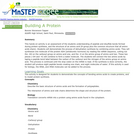
This is a hands-on activity to assess the students understanding of peptide and disulfide bonds formed during protein synthesis. Students demonstrate the process of dehydration synthesis by combining amino acids through peptide bonds creating molecules of water, and one protein amino acid strand. It can also be used to assess students understanding of the process of translation.

Learn about the interaction between chemical messages and their target cells in this video about hormone action.
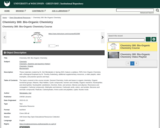
These materials created by Dr. Kiel Nikolakakis in Spring 2023, feature a syllabus, PDFs from Organic Chemistry with a Biological Emphasis by Dr. Timothy Soderberg, additional supplementary resources, a video playlist, video examples, and practice quizzes and keys.
The topics covered in this course include: General Chemistry; Acids and bases in organic chemistry; Organic functional groups; Alkanes; Alkyl Halides; Cyclic compounds; Isomers and chirality; Organic reactions; Nucleophiles and electrophiles; Nucleophilic substitution; Alcohols, thiols, and amines; Alkenes and alkynes; Resonance and conjugation; Carbonyl compounds; Aldehydes and ketones; Carboxylic acids, esters, and amides; Benzene and aromatic compounds; Radicals; Carbohydrates; Amino acids and peptides; Lipids; Nucleic Acids
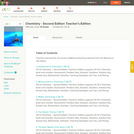
A work in progress, CK-12 Chemistry Teacher's Edition supports its Chemistry book covering: Matter; Atomic Structure; The Elements; Stoichiometry; Chemical Kinetics; Physical States of Matter; Thermodynamics; Nuclear and Organic Chemistry.

Seeing how an inhibitor can "compete" for an enzyme with the intended substrate.

Seeing how light energy can excite electrons which can be used to create ATP and NADPH (with oxygen as a byproduct).
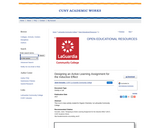
This is an in class activity created for Organic Chemistry I at LaGuardia Community College.
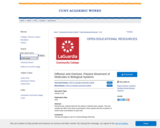
During this lab, students determine the salinity of collected water samples. They also compare the effect of the solute concentration of their samples with that of solutions of known solute concentrations on plant cells.

Energy cannot be created or destroyed. It can only be transferred or converted from one form to another.
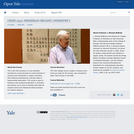
This is the first semester in a two-semester introductory course focused on current theories of structure and mechanism in organic chemistry, their historical development, and their basis in experimental observation. The course is open to freshmen with excellent preparation in chemistry and physics, and it aims to develop both taste for original science and intellectual skills necessary for creative research.
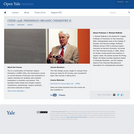
This is a continuation of Freshman Organic Chemistry I (CHEM 125a), the introductory course on current theories of structure and mechanism in organic chemistry for students with excellent preparation in chemistry and physics. This semester treats simple and complex reaction mechanisms, spectroscopy, organic synthesis, and some molecules of nature.
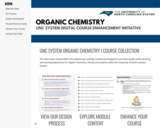
The information shared within this website was carefully curated and designed to promote quality online teaching and learning experiences for Organic Chemistry I faculty and students within the University of North Carolina System.
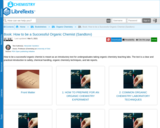
How to be a successful organic chemist is meant as an introductory text for undergraduates taking organic chemistry teaching labs. The text is a clear and practical introduction to safety, chemical handling, organic chemistry techniques, and lab reports.

The main content objectives covered in this unit are the phenomena of global warming, carbon cycle, ocean acidification, and its impact on plants, animals, and the marine ecosystem. The main purpose of this is to provide the reader with the basic knowledge base about these processes and understand the main players that are responsible for them. Fossil fuel pollution by human activities is contributing to the increase in the amount of CO2 in the atmosphere. Some of the CO2 is being absorbed by the oceans. This process increases the number of free hydrogen ions in the oceans, making the ocean water more acidic. This phenomenon is called ocean acidification. When oceans become acidic, they can negatively affect the plants, living organisms such as shell-forming organisms, and other marine life. The results of this process are devastating and this unit hopes to bring students’ attention to these dangers.

Word Count: 69776
(Note: This resource's metadata has been created automatically by reformatting and/or combining the information that the author initially provided as part of a bulk import process.)
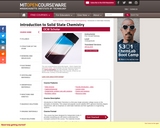
Introduction to Solid State Chemistry is a first-year single-semester college course on the principles of chemistry. This unique and popular course satisfies MIT’s general chemistry degree requirement, with an emphasis on solid-state materials and their application to engineering systems.
Course Format
This course has been designed for independent study. It provides everything you will need to understand the concepts covered in the course. The materials include:
A complete set of Lecture Videos by Prof. Sadoway.
Detailed Course Notes for most video sessions, plus readings in several suggested textbooks.
Homework problems with solution keys, to further develop your understanding.
For Further Study collections of links to supplemental online content.
Self-Assessment pages containing quiz and exam problems to assess your mastery, and Help Session Videos in which teaching assistants take you step-by-step through exam problem solutions.
About OCW Scholar
OCW Scholar courses are designed specifically for OCW’s single largest audience: independent learners. These courses are substantially more complete than typical OCW courses, and include new custom-created content as well as materials repurposed from previously published courses. Learn more about OCW Scholar.

Introduction to Solid State Chemistry is a first-year single-semester college course on the principles of chemistry. This unique and popular course satisfies MIT’s general chemistry degree requirement, with an emphasis on solid-state materials and their application to engineering systems.
Course Format
This course has been designed for independent study. It provides everything you will need to understand the concepts covered in the course. The materials include:
A complete set of Lecture Videos by Prof. Sadoway.
Detailed Course Notes for most video sessions, plus readings in several suggested textbooks.
Homework problems with solution keys, to further develop your understanding.
For Further Study collections of links to supplemental online content.
Self-Assessment pages containing quiz and exam problems to assess your mastery, and Help Session Videos in which teaching assistants take you step-by-step through exam problem solutions.
About OCW Scholar
OCW Scholar courses are designed specifically for OCW’s single largest audience: independent learners. These courses are substantially more complete than typical OCW courses, and include new custom-created content as well as materials repurposed from previously published courses. Learn more about OCW Scholar.
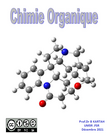
Ce cours donne une formation complète sur les principes généraux de la chimie organique. Son contenu vise à donner à l'étudiant une culture scientifique basée sur des concepts établis et vérifiés de manière critique. La présentation des avancées scientifiques basées sur des faits et de percées conceptuelles vise à donner les outils intellectuels permettant de discerner le caractère scientifique (ou non) d'une information présentée comme telle. Le cours met en avant l'importance de la qualité et la rigueur de la communication scientifique, écrite et/ou verbale.

Let's Learn about Chirality is a video-based module that introduces the concept of chirality and stereoisomers to students. The module is an Open Educational Resources #OER containing short videos and fun quizzes* that you can take to test your understanding. In this module, you will learn to use different terms for stereoisomers and chiral molecules, recognize characteristics of stereoisomers, construct a model of 2-chlorobutane, identify the chiral carbons in chemical structures and assign absolute configurations to a molecule. The concluding video will briefly explain how chirality affects the chemistry of substances & pharmaceuticals. Click on View Resources and let's learn about Chirality.*For teachers, the Genial.ly quizzes are re-useable for your classes.*